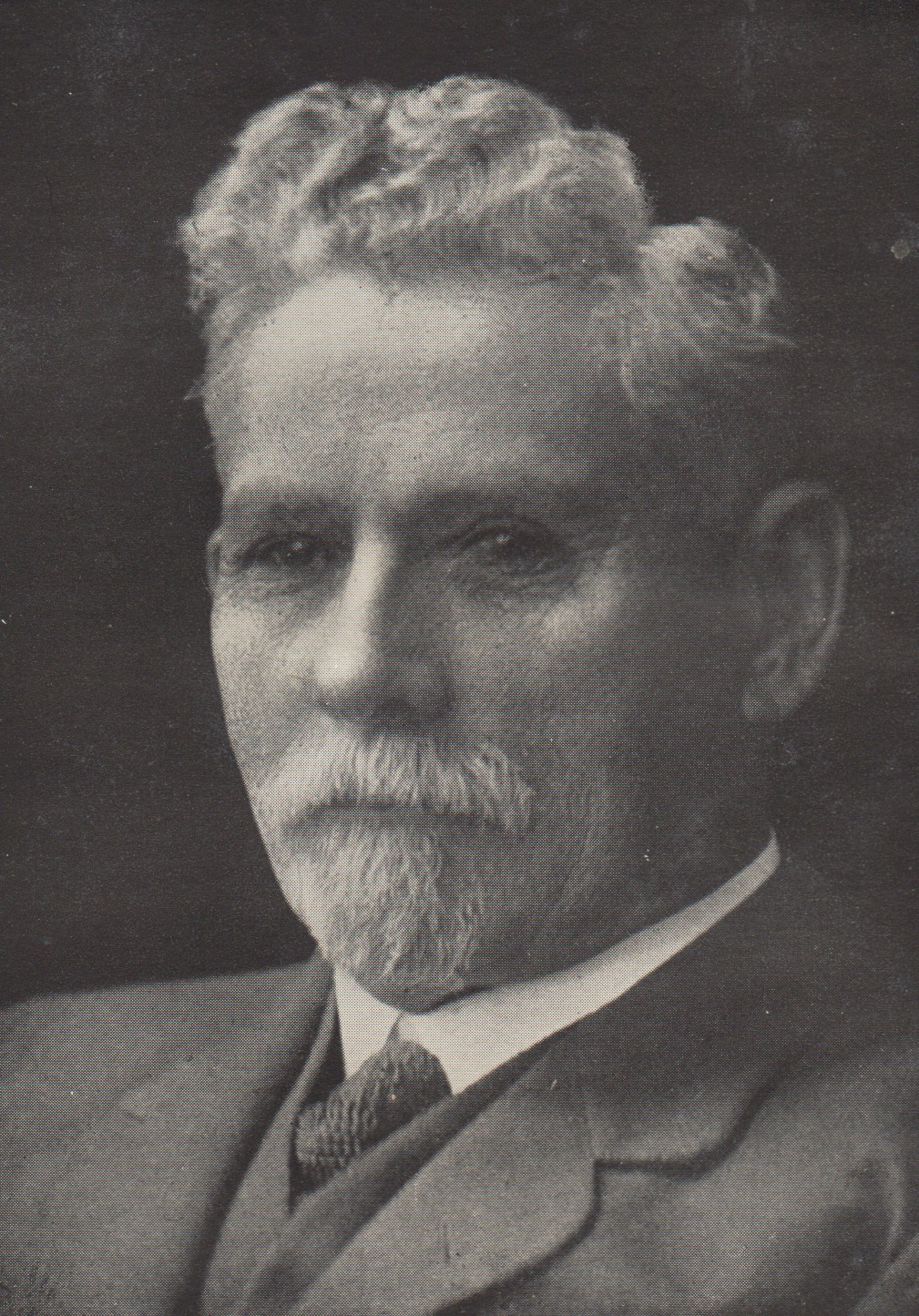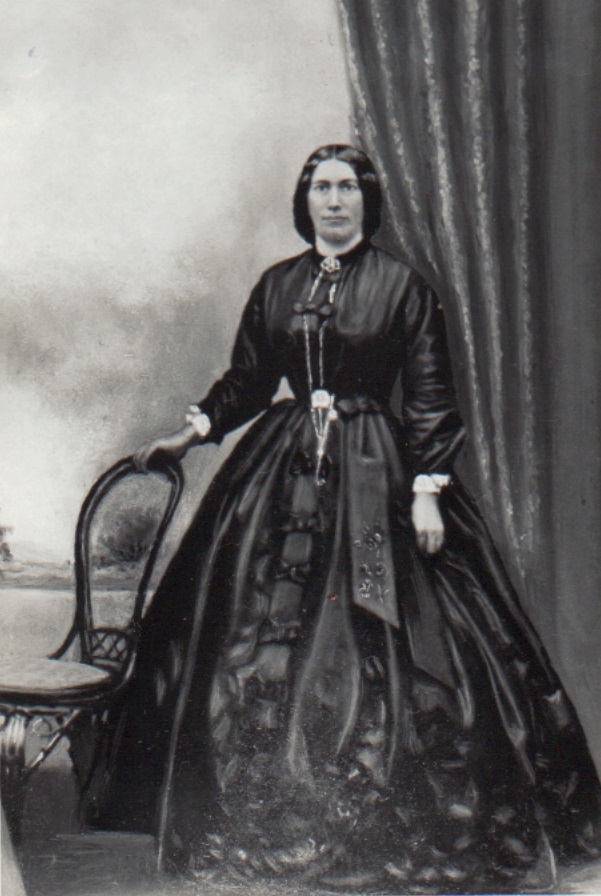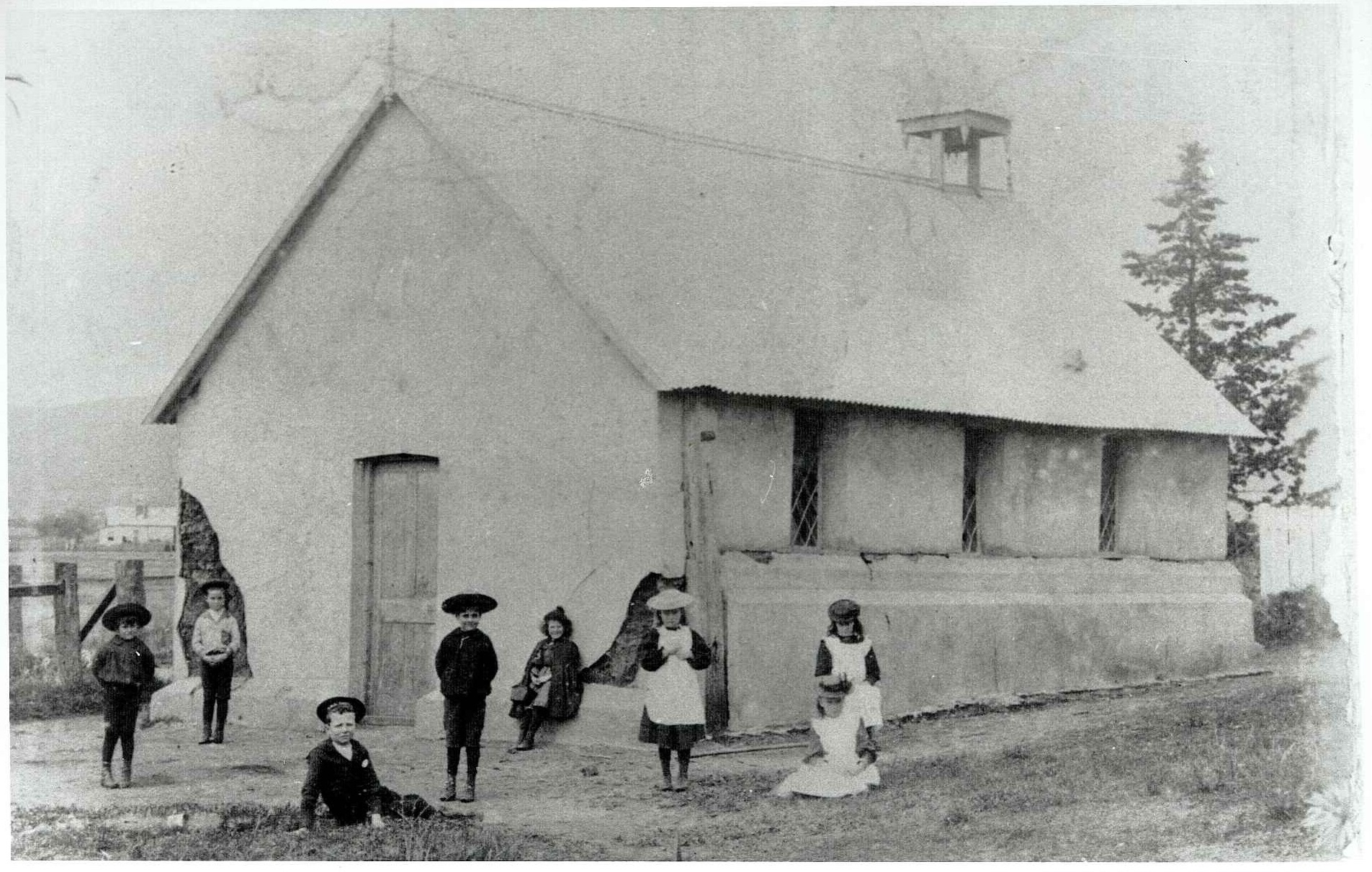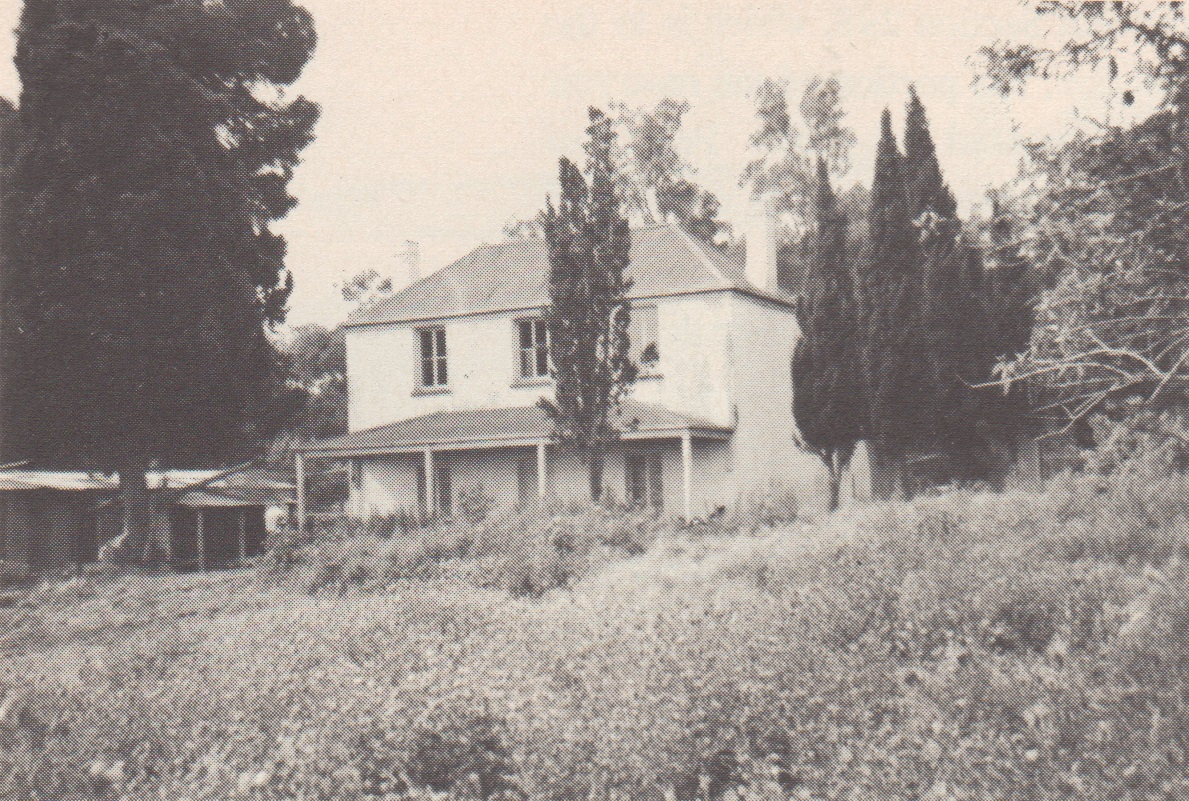Kidman, Sir Sidney
Athelstone’s most famous son, Sir Sidney Kidman, was Australia's largest landholder 1 , known far and wide as ‘The Cattle King.2

Figure 1 Sir Sidney Kidman
In his own words, Sidney Kidman said "I am a South Australian and proud of it. I was born in Athelstone on May 9, 1857."3 Many local residents believe that he was born at ‘Stonehouse Farm', Maryvale Road, Athelstone, immediately adjacent to Fifth Creek, on Section 302.4 However, the evidence shows that his parents were living on Section 301 at ‘Glen Stuart’, near the corner of Montacute and Maryvale Roads, Athelstone, at the time of his birth.5 Although, the family did later lease ‘Stonehouse Farm’.6
His parents, George Kidman and Elizabeth Mary Kidman (nee Nunn) were married in Bury St Edmonds, Suffolk, England, in 1848 and emigrated to South Australia about 1853, possibly on the ship 'May Flower'.7 The family first settled at Norwood, before leasing fifty-three acres of land on Section 301 at Athelstone, from Charles William Stuart, consisting of a house and garden, with a fifty-acre paddock to the west. The Payneham District Council rate assessment book for 1856 lists George Kidman as the lessee of Section 301, and describes 'Glen Stuart' as a three-roomed wooden house, with a stable and barn.8

Figure 2 Elizabeth Mary Kidman (nee Nunn)
Sidney Kidman, the fifth son of George and Mary Kidman, was born in 1857 and baptised at St George's Anglican Church on St Bernards Road, in the nearby Village of Woodforde, now Magill.9
George Kidman was a popular, hard-working, community-minded man, who was elected to the Payneham District Council. In May 1858, he was granted £5 by the Council and given permission to repair the intersection of Montacute and Maryvale Roads, near his house.10
Unfortunately, during the bleak winter weather, George Kidman caught a chill while undertaking the repairs to the road and died of bronchitis on July 17, 1858, aged 39 years11 . He was buried in an unmarked grave at St George's Anglican Church, Magill12. Sidney Kidman was fourteen-months old at the time of his father's death, and his mother, Mary Kidman, was pregnant with their sixth son13. The widowed Mary Kidman and her children remained living at 'Glen Stuart' for the next few years14.
Despite the circumstances, Sidney Kidman appears to have received a reasonable level of formal education, at a time when it was not compulsory. In one newspaper interview, Kidman is quoted as saying that he attended "Regent’s private school at Norwood and Miss Hancock’s at Campbelltown"15. However, elsewhere it is recorded as "Bagent's school" in Norwood16, which seems to be more accurate, as there was a Mr Bagent's private school at St Matthew's Anglican Church, Kensington17. Likewise, there is no record of Miss Hancock’s school at Campbelltown, but it was most likely the school at St Martin’s Anglican Church, Campbelltown, probably taught by Blanch Cornish Hancock, the eldest daughter of John Hancock who was the first postmaster of Campbelltown.

Figure 3 Cob Schoolhouse, St Martin's Anglican Church, Campbelltown, 1861.
In June 1862, Mary Kidman's father, Frederick Nunn, died, leaving her a substantial bequest of £4,000 in investments, to be controlled by his executors. Mary Kidman was to receive an annual income from investments during her lifetime, with the capital to be paid to her children upon her death, once the children had married or attained their majority18. In September of the same year, 1862, Mary Kidman married Stephen Starr of Thorndon Park (now Paradise), who was at least eleven years her junior, with whom she later had three daughters.19
However, the relationship was a disastrous one, Stephen Starr was declared insolvent in 1864, imprisoned for one month for fraud, and his assets were seized under distress for rent. According to Stephen Starr's testimony at the time, they left Mr Stuart's place (‘Glen Stuart’, Section 301, Athelstone) in 1863, and had been living at Mrs Hearne's (‘Huntworth Farm’, Section 350, Thorndon Park), until moving to John Miller's (‘Stonehouse Farm’, Section 302, Athelstone) five months ago.20

Figure 4 'Stonehouse Farm', Athelstone, in 1968.
More accusations of assault, theft, and drunken behaviour, were levelled against Stephen Starr, while the family were again living at Thorndon Park21. By 1869, Stephen Starr was back before the insolvency court, where it is recorded that he had been farming on land belonging to Mr T. G. Williams at Norwood [Mrs Starr's trustee] since March 25, 186822. Soon after this second insolvency, Stephen Starr abandoned his wife and children, for such dubious pursuits as opening a skittle alley at the ‘Norwich Arms’ Hotel in Flinders Street, Adelaide.23
Like his elder brothers before him, Sidney Kidman left home at a very young age. Kidman said that he "left Adelaide in 1871"24, when he was thirteen years old. By this time, he had already been working, at Dean, Laughton, & Co.'s stockyards at Stepney, for twelve months, saving enough money to buy a horse25. The author Ion Idriess in his 1936 book about Sir Sidney Kidman, paints a dramatic and highly romanticized portrait of his departure from home, in the dead of night, on a one-eyed horse named 'Cyclops'26. The truth was much more prosaic, Kidman was almost fourteen years old, rather than “barely thirteen” as described in the book, he had been earning his own living for some time, and it was not at all unusual for a young man of fourteen to strike out on his own in the 1870s.27
His mother, Mary Starr, remained living in Norwood with her youngest son and three daughters. Sidney Kidman always took great care to send money home to help support his mother and younger siblings28. However, Mary Starr, died in 1873 of liver disease, aged 49, while living at The Parade, Norwood, and was buried in an unmarked grave at the Magill Cemetery29. His step-father, Stephen Starr, who by now was living at Melrose, lost no time in re-marrying. And Kidman's three sisters were taken in by Eliza Starr, the unmarried sister of Stephen Starr.30
Sidney Kidman worked his way up the pastoral industry via a series of tough jobs on outback stations, such as drover, bullock driver, and even an odd-job boy in a grog shanty. Following his mother's death in 1873, he received an annual stipend from his grandfather's will, before obtaining his full inheritance of £400 in 1878. Through astute investments, Kidman parleyed his inheritance into a healthy fortune. In 1887, he bought his first property, 'Thule' Station, near Charleville in Western Queensland, further cattle stations in the Northern Territory, South Australia, New South Wales, and Western Australia were to follow. Until by 1903, he owned 98,420 km2 across Australia. Sidney Kidman was knighted for his services to pastoralism in 1921. When he died, at the age of 78, in 1935, Sir Sidney Kidman owned 3.5% of Australia's land, 68 cattle stations covering more than 250,000 km² running more than 600,000 cattle.31
In 2016, S Kidman & Co., the company he created in 1899, was still listed as one of the largest landholders in Australia.32
Researched and compiled by Helen Thiselton, Local History Officer.
If you have any comments or questions regarding the information in this local history article, please contact Helen on 8366 9357 or hthiselton@campbelltown.sa.gov.au
REFERENCES
- The Canberra Times (ACT) Mon 12 March 1984, page 21. Trove: http://nla.gov.au/nla.news-article124995808
- Darling Downs Gazette (Qld) Thu 31 July 1913, page 3. Trove: http://nla.gov.au/nla.news-article187359066
- The Register (Adelaide, SA) Mon 31 August 1903, page 5. Trove: http://nla.gov.au/nla.news-article56217358
- “Links: linking the past with the present.” (2009) Campbelltown City Council, Campbelltown (S. Aust.), page26.
- Warburton, Elizabeth (1986) “From the river to the hills: Campbelltown 150 years.” The Corporation of the City of Campbelltown, Campbelltown (S. Aust.), page 173.
- “City of Campbelltown heritage survey.” (1996) South Australia. Dept. of Environment and Natural Resources, page 90.
- Australian Dictionary of Biography – Sir Sidney Kidman. http://adb.anu.edu.au/biography/kidman-sir-sidney-6948
- [Warburton, Elizabeth] (1985) "George Kidman and family." unpublished research notes: LH BI 00115. Campbelltown City Council, Local History Room, Campbelltown (S. Aust.).
- Warburton, Elizabeth (1986) "From the river to the hills: Campbelltown 150 years." The Corporation of the City of Campbelltown, Campbelltown (S. Aust.), page 173.
- South Australian Register (Adelaide, SA) Tues 1 June 1858, page 3. Trove: http://nla.gov.au/nla.news-article49776410
- South Australian Register (Adelaide, SA) Tues 10 August 1858, page 4. Trove: http://nla.gov.au/nla.news-article49785509
- Bowen, Jill (2007) "Kidman: the forgotten king." 20th anniversary edition. Fourth Estate, London, page 14.
- Warburton, Elizabeth (1986) "From the river to the hills: Campbelltown 150 years." The Corporation of the City of Campbelltown, Campbelltown (S. Aust.), page 173.
- South Australian Register (Adelaide, SA) Fri 13 June 1862, page 2. Trove: http://nla.gov.au/nla.news-article50179388
- Western Herald (Bourke, NSW) Wed 26 August 1908, page 2. Trove: http://nla.gov.au/nla.news-article104003624
- The Register (Adelaide, SA) Mon 31 August 1903, page 5. Trove: http://nla.gov.au/nla.news-article56217358
- Adelaide Times (SA) Tue 8 May 1855, page 3. Trove: http://nla.gov.au/nla.news-article207024348
- [Warburton, Elizabeth] (1985) "Starr insolvency." unpublished research notes: LH BI 00115. Campbelltown City Council, Local History Room, Campbelltown (S. Aust.).
- [Warburton, Elizabeth] (1985) "Mrs Elizabeth Kidman/Starr." unpublished research notes: LH BI 00115. Campbelltown City Council, Local History Room, Campbelltown (S. Aust.).
- [Warburton, Elizabeth] (1985) "Starr insolvency." unpublished research notes: LH BI 00115. Campbelltown City Council, Local History Room, Campbelltown (S. Aust.).
- South Australian Weekly Chronicle (Adelaide, SA) Sat 20 July 1867, page 4. Trove: http://nla.gov.au/nla.news-article91266099
- Evening Journal (Adelaide, SA) Tue 4 May 1869, page 2. Trove: http://nla.gov.au/nla.news-article196726610
- The Express and Telegraph (Adelaide, SA) Fri 24 Dec 1869, page 1. Trove: http://nla.gov.au/nla.news-article207685601
- Western Herald (Bourke, NSW) Wed 26 August 1908, page 2. Trove: http://nla.gov.au/nla.news-article104003624
- Bowen, Jill (2007) "Kidman: the forgotten king." 20th anniversary edition. Fourth Estate, London, page 13.
- Idriess, Ion L. (1947) “The cattle king: the story of Sir Sidney Kidman.” 19th edition. Angus and Robertson, Sydney, page 1-3.
- Bowen, Jill (2007) "Kidman: the forgotten king." 20th anniversary edition. Fourth Estate, London, page 15.
- Bowen, Jill (2007) "Kidman: the forgotten king." 20th anniversary edition. Fourth Estate, London, page 21.
- The South Australian Advertiser (Adelaide, SA) Thurs 26 June 1873, page 1. Trove: http://nla.gov.au/nla.news-article73061426
- Bowen, Jill (2007) "Kidman: the forgotten king." 20th anniversary edition. Fourth Estate, London, page 14.
- Austin, Nigel (2015) "Empire of the sun." in The Advertiser (SA Weekend) July 11-12, 2015, pages 12-15.
- Owens, Jared (2016) "S. Kidman & Co cattle empire sale to Chinese blocked." in The Australian Business Review, April 26.
